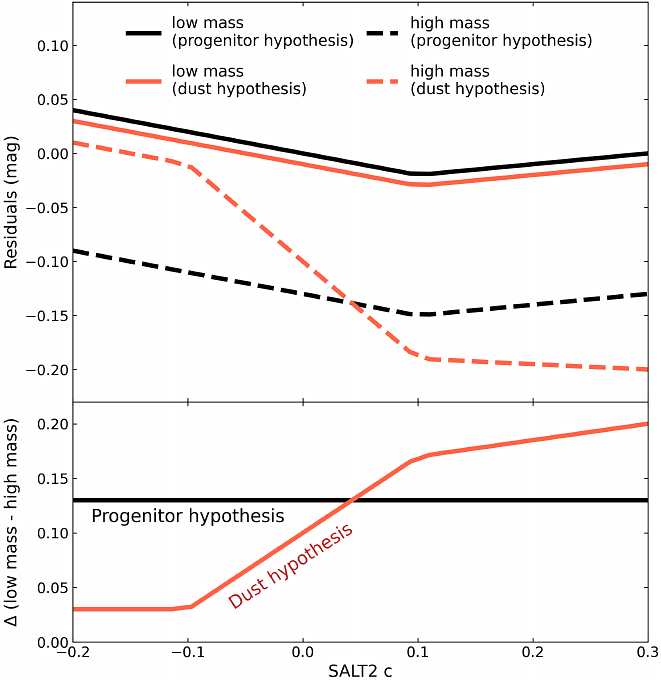Reassessing the ZTF Volume-Limited Type Ia Supernova Sample and Its Implications for Continuous, Dust-Dependent Models of Intrinsic Scatter

Reassessing the ZTF Volume-Limited Type Ia Supernova Sample and Its Implications for Continuous, Dust-Dependent Models of Intrinsic Scatter
Yukei S. Murakami, Daniel Scolnic
AbstractThe ZTF DR2 includes light curves of 3628 Type Ia supernovae (SNe Ia), making it the largest low-redshift SNe Ia sample available. One central question for analyses of SNe Ia is whether the remaining diversity of standardized luminosities arises in part from an intrinsic or extrinsic effect; characterized by the color-independent bimodality in progenitor population or color- and host- dependent diversity in dust extinction, respectively. In the initial analyses of the volume-limited subset (z < 0.06; 945 SNe) of this sample from the ZTF collaboration, the authors reported evidences for the former hypothesis, in contrast to many of the previous evidences for the dust hypothesis found across other largest high- and low- redshift SNe Ia samples. We re-analyze the volume-limited ZTF SNe Ia in the same manner that previous samples were analyzed and report consistency with trends seen in literature samples and in support of the dust hypothesis. We find the following: 1. a color dependency in the canonical `mass-step' size for SNe, with red SNe having a larger host-dependent residual step than blue SNe by 0.18 $\pm$ 0.09 mag; 2. a color-dependent difference in the Hubble residual scatter, with red SNe having a $\sim$ 33% larger scatter than blue SNe at > 3$\sigma$ significance; 3. data's preference of a model that accounts for color-dependency over a simple `step' model at $\sim$ 3$\sigma$; 4. the strongest evidence to date (3.5$\sigma$) that the relationship between SN color, host-galaxy properties, and luminosity is continuous rather than characterized by a discrete step. Accounting for 3 and 4 with our new model, Host2D, yields a 4.0$\sigma$ improvement over the mass-step model. We trace the difference in reported findings to the fitting and analysis methods, in particular the model complexity allowed for the color-luminosity relation, rather than a difference in the sample itself.